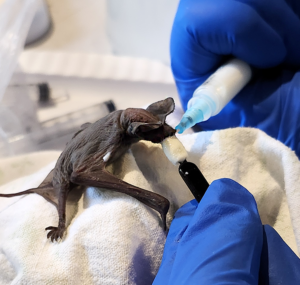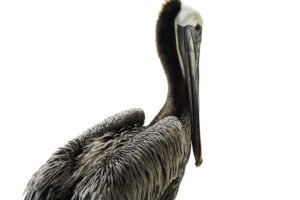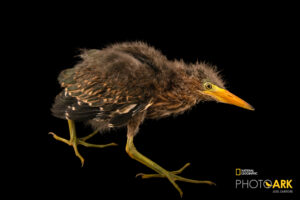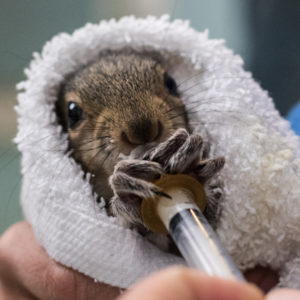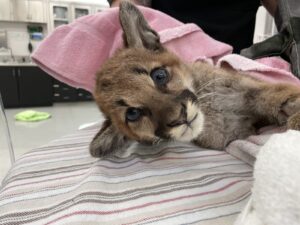
Volunteer hand feeds young fawn that was likely “kidnapped” from its mother who was foraging nearby.
By Tai Moses
A working knowledge of natural history could reduce a lot of the unintentional harm we do to wildlife.
Here’s a troubling fact: many of the fawns brought to wildlife rescue centers in spring have accidentally been “kidnapped” by people who mistakenly believe the fawns are orphans. This widespread problem reveals a lack of knowledge about the natural world. A hundred or so years ago, a farm kid would have known that does leave their fawns alone while they forage during the day, sometimes for up to 12 hours. But back then, the majority of humans lived in rural areas where they had regular contact with wild creatures. Kids spent more time outdoors, observing and learning about their surroundings.
Today, while we may live alongside wildlife and see them almost daily, many of us don’t know basic facts about how wild animals and birds raise their young.
Deer aren’t the only victims of unintentional kidnappings. Young rabbits and fledgling songbirds are commonly abducted by humans who find what they think are abandoned babies. Actually, mother cottontails leave their babies in a cozy nest and stay far away from it to avoid attracting predators. Fledglings often spend a few days on the ground while learning to fly, where their parents continue to feed and keep a close eye on them.
Spring garden cleanups can be one of the worst “orphan-makers.” When we prune trees and shrubs in spring and summer we can inadvertently destroy nests and make orphans of baby birds and squirrels.
Wild babies are always better off with their mothers in the wild. While Native Animal Rescue and other wildlife rehab groups try to reunite kidnapped babies with their families, this is difficult at best, and many wild creatures do not survive the trauma of being separated from their mothers and siblings.
Good information is critical. A working knowledge of natural history would enable us to safely share our world with other animals and not injure or destroy them—or their food source—in the process. Let’s view this as an opportunity to get acquainted with our wild neighbors, because they’re not going anywhere, and learning a few of their customs and habits will help to keep them—and us—safe. Because it turns out that knowing when to leave animals alone is just as important as knowing when to help them.
Tai Moses is the author of Zooburbia: Meditations On The Wild Animals Among Us (Parallax Press, 2014). She lives in Santa Cruz.
To learn how to tell when a fawn needs your help, go to Was This Fawn Kidnapped.

